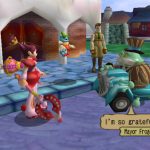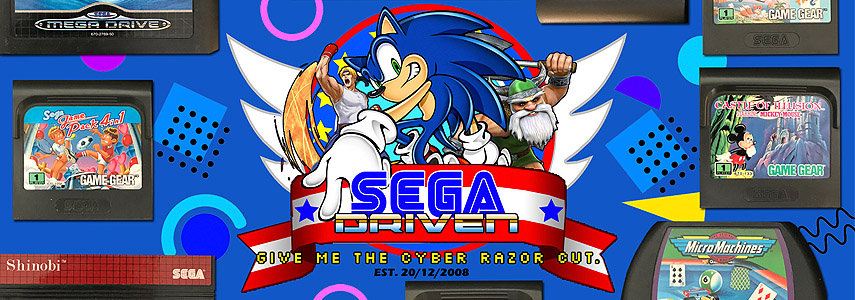Napple Tale: Arsia in Daydream – Dreamcast Game Review
Napple Tale: Arsia in Daydream is a platform game from 2000 that was developed by Chime and has been locked into Japan exclusivity for its entire existence. Thankfully in 2019 the game received an English fan translation courtesy of Cargodin who opened up the game to a whole new English-speaking audience. Napple Tale puts you in control of the boisterous Porch Arsia who is accidentally whisked away to the afterlife by a spirit guide called Straynap. Straynap manages to mistake Porch for the similarly named Porshe, who was a cat that was scheduled to pass on. The after world that Porch and Straynap now inhabit is a sort of liminal space called Napple World that is suffering from a bunch of problems of its own. When a new lifeform arrives in Napple World its 6 “petals” (the life force contained in all living things) are scattered across the land. In order for Porch to return to the world of the living she has to explore the 4 seasons of Napple World that are now in turmoil, restore them to their natural state, and reobtain her petals from the guardians in each season.
Despite all this talk of death, Napple Tale has an extremely whimsical and dream-like presentation. Napple World’s inhabitants are a colourful bunch of weirdos that include the mysterious Pierrot the Clown, an anthropomorphic cow that runs a bar, and the wonderful Mayor Frogcar, who is a literal frog blended with a car. Napple World serves as the game’s hub world and it’s here that you can access action stages, save your game, speak to NPCs, progress the game’s story, and start side quests. The game will quickly get you up to speed with its controls and abilities when you head on over to Pierrot’s big top tent to take part in the game’s tutorial. Porch can jump, double jump, and attack enemies with her wand. The wand attack actually turns enemies into projectiles which will scoop up other enemies if they collide, while also unlocking certain treasure chests.
Defeating enemies and opening chests can also reveal MIS items. MIS items are the core foundation for the game’s Paffet system. Taking these items to a specific room in Napple World’s ice cream parlour allows you to inspect them, which in turn allows you to remix them into little critters called Paffets. Paffets give you certain buffs and abilities that can include healing, the creation of temporary platforms, and the activation of certain switches that open up new areas amongst other things. You can equip 5 Paffets at any time so as you build your collection you can swap and choose which Paffets best suit your method of play. There are also furniture Paffets that form the basis of the game’s side quests as different NPCs will commission you to get certain furniture for them.
With all of these things in mind you now have an understanding of everything Napple Tale is going to throw at the player. You explore Napple World, speaking to its townsfolk and progress the story, while going into action stages to defeat the bosses, restoring your petals, and finding more MIS items to create Paffets to help you progress. While the game is presented as a 3D platformer and does feature some 3D space to explore, the action stages are more comparable to belt-scrolling beat-em-ups and only feature a tight strip of space to really explore. Most of the action is taking place on the horizontal plane, so there’s not a great deal of exploration to do in the stages themselves. Thankfully the stages are well designed, creative and varied, so the lack of 3D exploration doesn’t feel like a massive detriment. The action and tone of Napple Tale is remarkably similar to Namco’s 1997 2.5D platformer Klonoa: Door to Phantomile; to the point that developer Chime must have been influenced by it. It even features a similar tonal shift in its endgame that I won’t spoil.
So while Napple Tale features some wonderfully tight platforming, an intriguing storyline, fascinating characters, and a colourful world to explore, it does falter in a couple of places. The boss battles are a particular sticking point and rarely offer up any real challenge. It’s very easy to go into a boss battle with full health and just repeatedly attack them while ignoring any damage you are taking. You often find yourself depleting the boss’s health faster than they can harm you. There’s also a lot of busy work to do when creating Paffets. The constant need to navigate between floors in the ice cream parlour as you remix MIS items in one location and then equip the Paffets you create feels like the whole process could’ve been condensed into a single location. You also spend a lot of time rotating the MIS items under a microscope, looking for certain points of interest. It all feels very inconsequential and tedious to engage with.
Outside of these minor complaints, Napple Tale: Arsia in Daydream is another brilliant Dreamcast game that platform game fans absolutely have to experience. Its story and writing are enthralling, and I loved being a part of the vibrant fairy tale world it places you in. The action really tests your platforming skills, and every stage conjures up new ideas, enemies and challenges, making it a joy to play through. The fact this never received an official Western port is a real shame because this fan translation by Cargodin showcases a fanciful and radiant platformer with a deeply engaging plot. It’s also complimented by a beautiful Yoko Kanno soundtrack that elevates the atmosphere across the entire experience, so fans of Macross Plus, Cowboy Bebop and Ghost in the Shell: Stand Alone Complex will really enjoy more brilliant work from this legendary composer.
8/10
Written by Lewis “Sonic Yoda” Clark on 17/11/2025
Click here to download the Napple Tale: Arsia in Daydream English fan translation by Cargodin.












